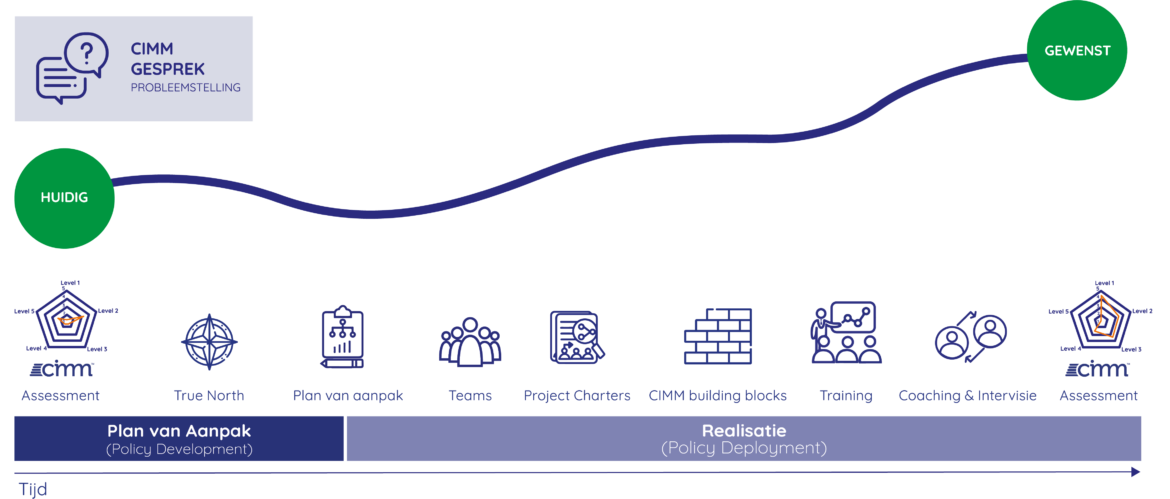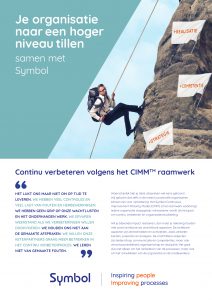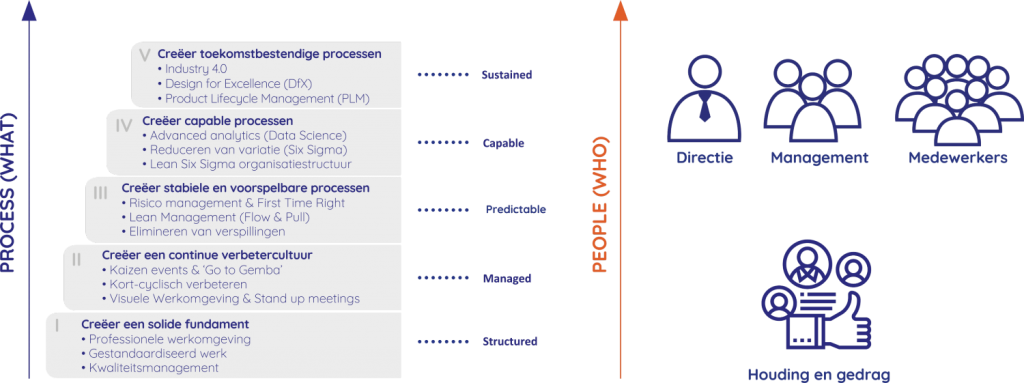Lean transformation
Lean transformation begins with conducting a CIMM assessment to determine the level at which the organization is currently operating. The level of process improvement is assessed, as are the associated behaviors of top management, middle management and employees. The results are discussed in the management team
The Lean transformation: from ist to soll
Do we all look at the organization in the same way? What is the current maturity level of the organization and what is the desired level? Are “Process (How)” and “People (Who)” in balance with each other?
CIMM™ Assessment: Strategy, Competence and Realization
Once you have completed Symbol’s CIMM assessment, the CIMM assessment and the intended objectives are the input for the development plan. The transformation concludes with a second CIMM assessment to verify that the objectives have been met.
The development plan is based on three elements that cannot be separated, namely Strategy, Competence and Realization. Therefore, they are represented as puzzle pieces for a reason. If there is no clear strategy, everyone will go in a different direction. If investment is made only in training, no impact will be realized, and if employees are assigned to projects without the necessary knowledge and expertise, they will not be successful. Therefore, it is important to give proper attention to each of the elements.
Want to know more?
Download the brochure below, tailored to your industry. And don’t forget to make the free CIMM™ in advance! More information about the Symbol approach can be found under the banner.
Improve in the industrial and automotive sectors?
Improve in the service and care sectors?
Test your organization for free and complete the online CIMM™ scan here!
and immediately download the PDF with results and improvement tips!
Lean transformation through the Symbol approach!
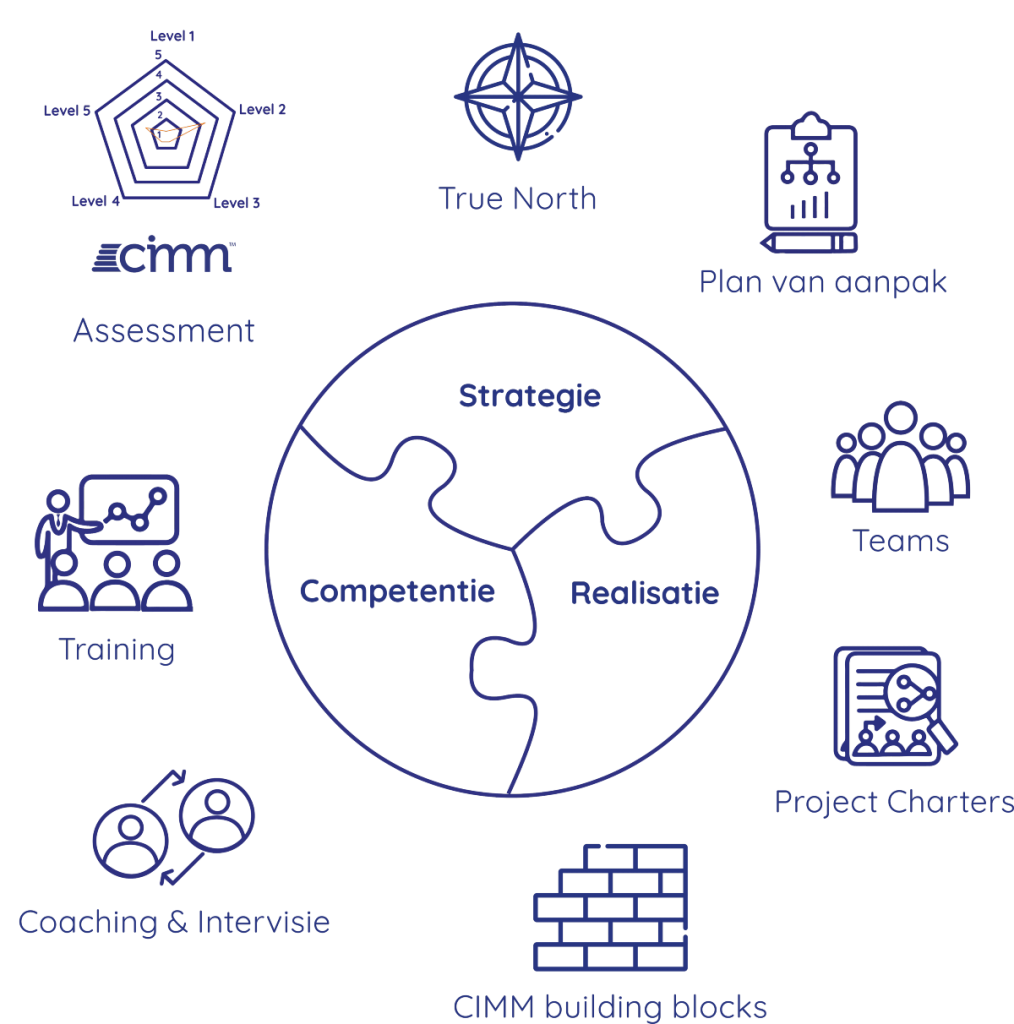
Strategy (Policy development)
First, the current situation of the organization is determined. The CIMM assessment can be used for this purpose, where we look at the five levels of process improvement and the corresponding behaviors of board, management and employees. From the organizational strategy, the vision and goals are determined. This is the intended situation. In Lean terms, we call this the “True North. Then we create a plan of action that describes how to get from the current situation to the intended situation.
Competency Development
A learning organization is the term given to an organization that facilitates the constant development of its employees and continuously transforms itself. Competencies is the set of knowledge, skills and attitude. To get managers and employees at the right level and to learn new techniques, a development plan and training agenda is set up. The first part is gaining the right knowledge and skills by undergoing training. The second part is gaining experience by conducting improvement projects. Successful completion of projects will require coaching and peer review in addition to training. Therefore, our approach is always to combine training, project coaching and peer review.
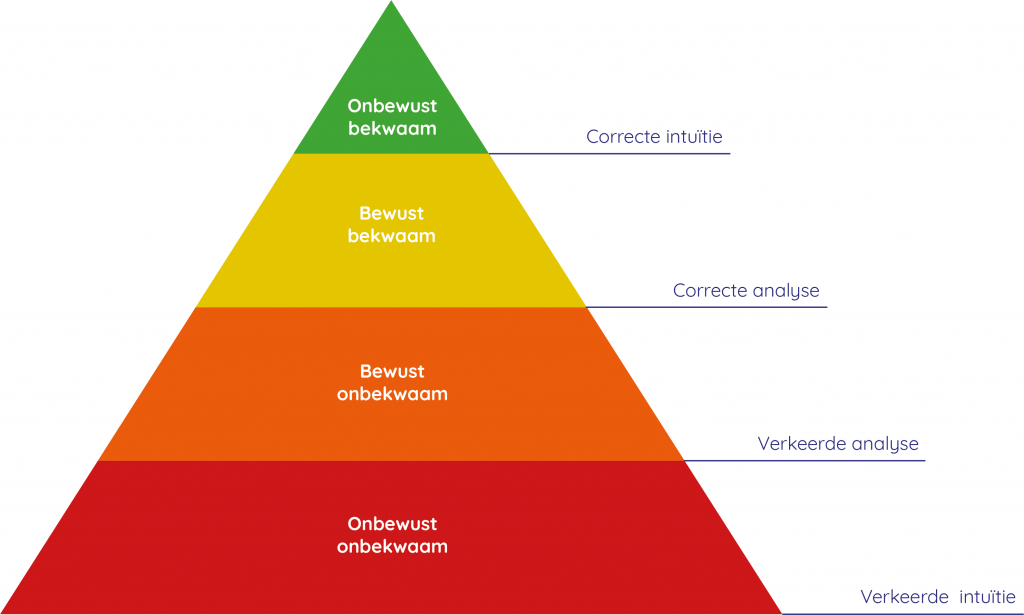
Realization (Policy deployment)
Objectives are only achieved once improvements are realized. Projects are selected from the strategic and operational objectives. Depending on the intended CIMM level, it follows which building blocks need to be developed or implemented for this purpose. Then Green and Black Belts are assigned to projects as project managers and other staff are assigned to the teams. Plotting the components described above over time, we arrive at the following approach.
